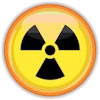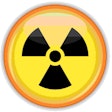
NEW YORK (Reuters Health), Aug 17 - In patients with bilateral retinoblastoma, salvage external-beam radiotherapy (EBRT) is highly effective in preserving eyes with useful vision following failed chemotherapy and focal treatments, U.K. researchers report in the August issue of the British Journal of Ophthalmology.
EBRT "used to be a standard first line treatment of retinoblastoma," investigator Dr. John H. Hungerford told Reuters Health. However, it "has been almost entirely replaced in this role by systemic chemotherapy because it is implicated in the development of the second nonocular cancers to which survivors of retinoblastoma with germ line mutations are susceptible."
"The use of external radiation therapy," he added, "is now largely confined to salvage treatment when chemotherapy has failed to control a tumor, particularly in an only remaining eye and when radiotherapy offers one of the few remaining chances of saving vision."
To examine how successful this approach might be, Dr. Hungerford and colleagues at the Royal London Hospitals retrospectively studied data on 36 eyes in 22 patients.
Thirty-two eyes received lens-sparing radiotherapy, and four had whole-eye radiation. The rate of eye preservation was 83.3% (30 of the 36 eyes). Moreover, 24 eyes (66.7%) were controlled by the approach and required no further treatment.
During a median follow-up of 40 months, there were no second cancers or deaths.
The results, concluded Dr. Hungerford, show "that the relative risk of a second cancer may be justifiable because of the very high chance that external beam treatment will be successful in preserving the eye."
In another paper from the same institution, Miss V. M. L. Cohen and colleagues, including Dr. Hungerford, report on 15 children who underwent primary chemotherapy for group D heritable retinoblastoma.
Of the 18 eyes with group D disease, 2 (11%) were treated successfully with chemotherapy alone, nine (50%) underwent successful salvage treatment, and seven (39%) were enucleated.
Ocular survival was 67% at 2 years. However, event-free survival at this point was only 34%. Thus, say the investigators, "Multiagent chemotherapy alone is rarely sufficient for the preservation of group D eyes."
In an accompanying editorial, Dr. Santosh G. Honavar of the LV Prasad Eye Institute, Hyderabad, India, observes that "management of retinoblastoma is 'work in progress.'"
Decision on treatment, Dr. Honavar concludes, "should be based on informed discussion with the parents and astute consideration of all potential risks and benefits."
By David Douglas
Br J Ophthalmol 2009;93:848-849,887-890,891-894.
Last Updated: 2009-08-17 13:00:05 -0400 (Reuters Health)
Related Reading
Tree bark extract might help treat rare eye cancer, March 19, 2007
Copyright © 2009 Reuters Limited. All rights reserved. Republication or redistribution of Reuters content, including by framing or similar means, is expressly prohibited without the prior written consent of Reuters. Reuters shall not be liable for any errors or delays in the content, or for any actions taken in reliance thereon. Reuters and the Reuters sphere logo are registered trademarks and trademarks of the Reuters group of companies around the world.

















